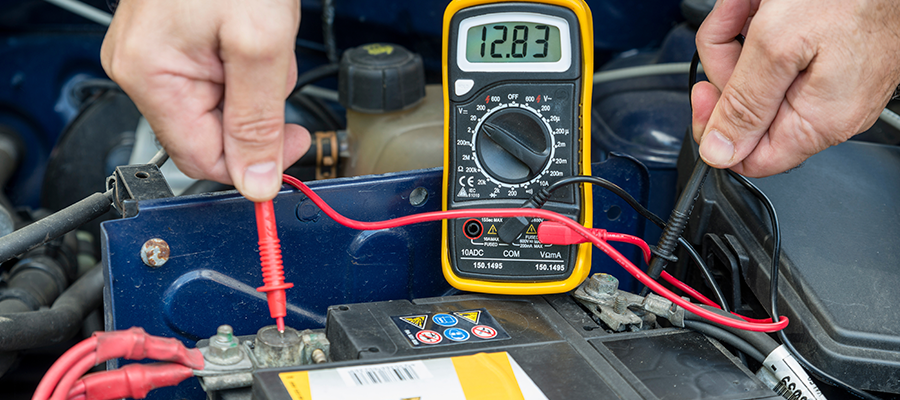
What is Voltage? What is Current? What is Resistance?
During charge and discharge, an electric circuit is formed when a conductive path is created to allow electric charge to move through the circuit continuously. This continuous movement of electric charge through the conductors of a circuit is called a current and is often referred to in terms of current flow.
Just like how the rate that water flows downhill is determined by the steepness of the hill and the debris and grade changes in its way, current flow intensity in a circuit is influenced by the voltage potential and the resistance in the circuit.
The force or pressure creating the flow in a circuit is called voltage. Voltage is a measure of the potential energy differential that must always exist between two points if there is to be any flow between the points. Without potential, there is no voltage.
Current flow moves from one point to another through various points of friction. This opposition to the motion is called resistance. The intensity (flow amount) of current in a circuit depends on the amount of voltage (downhill pressure) and the amount of resistance against that pressure in the circuit to oppose or resist the current flow. Just like the voltage, resistance is a quantity relative between two points. For this reason, the combined quantities of voltage or resistance are often spoken of as being “the voltage drop” between two points or “the total resistance between two points.”
To speak to the charge and discharge process, we need to be able to make meaningful statements about the quantities of voltage, current and resistance in the charge and discharge circuits, so we need to be able to describe them:
|
Unit of Measure |
Symbol |
Units |
Abbreviation |
|
Volts (Potential Pressure) |
V or U or E |
Volt |
V (U) |
|
Current (Intensity of flow) |
I |
Ampere (Amps) |
A |
|
Resistance (resistance to flow) |
R |
Ohms or (Milliohms) |
Ω (mΩ) |
